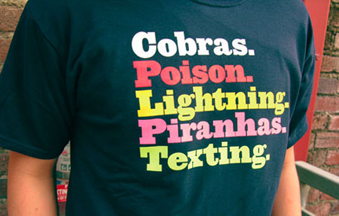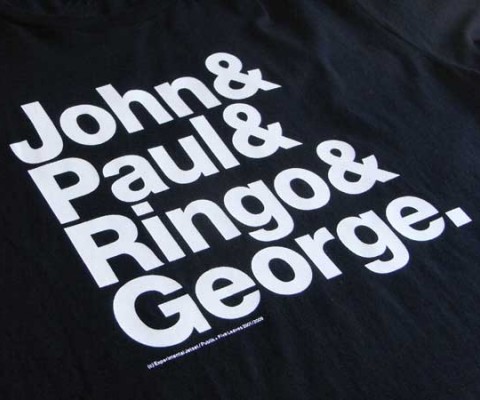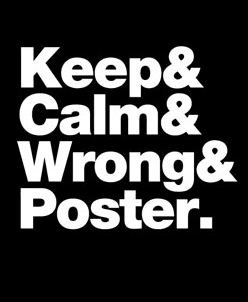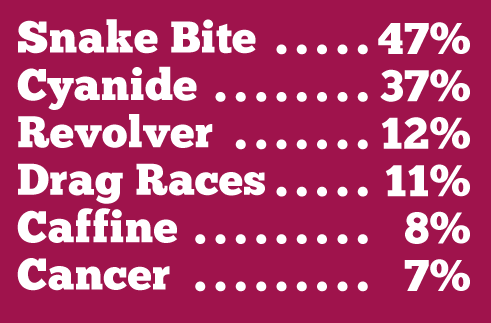I am always collecting interesting images and ideas I see online. A sort of digital scrap book to go back through when looking for inspiration. One needs to be careful with inspiration, because out-right using the idea without permission is unprofessional at best and unlawful at worst. Recently, I came across a project by hybrid-design called Impact Campaign.  I really liked the design, the colours and the simplicity of the project.
I really liked the design, the colours and the simplicity of the project.
Impact Campaign was an attempt to make teenagers aware that traffic accidents were their leading killer. Part of the campaign were stylised posters and t-shirts with a colourful simple list of words which people thought were potentially lethal. The results ranged from snakes to drugs to diseases to weapons. It is an interesting insight into what people think are dangerous and what actually have a high probability of killing you. There is a huge rift in the psychology of assessing risk and actual danger.
 I really liked the design and discussion around the t-shirt design. It also reminded me of the popular beatles Helvetica t-shirt. You’ve probably seen it, it says John & Paul & Ringo & George all typeset in Helvetica, one name per line. If you haven’t you’ve probably seen one of many t-shirts in a similar style. It has become a meme and you see plenty of four word terms. It ranges from other bands to humours adaptations such as Toast & Ham & Cheese & Toast.
I really liked the design and discussion around the t-shirt design. It also reminded me of the popular beatles Helvetica t-shirt. You’ve probably seen it, it says John & Paul & Ringo & George all typeset in Helvetica, one name per line. If you haven’t you’ve probably seen one of many t-shirts in a similar style. It has become a meme and you see plenty of four word terms. It ranges from other bands to humours adaptations such as Toast & Ham & Cheese & Toast.
I thought it would be interesting to merge these two ideas into my own. I didn’t want to directly rip-off the dangerous terms used in the Impact Campaign, so I thought about using 4-5 terms that I thought were lethal. Honestly, after knowing about the project I was too biased to the terms and in fact I would probably pick many of the same words. So I decided that I am not the best person to make my own t-shirt design. For a while this is where the project ended, until I remembered the mechanical turk!
Amazon has a service called “The Mechanical Turk” after a real-life automaton of the same name. If you are unfamiliar with this, I recommend reading Tom Standages book, The Turk or the Wikipedia page about the Turk. Amazon’s service has been described as Artificial, artificial intelligence. AI is really hard to program, so why not make an Artificial AI by asking humans! It is a brilliantly simple idea and it works really well. For instance, It would take days to write some AI to determine if a photo contained a picture of a chair or a table. Both of those objects share very similar characteristics, four legs and a flat part on top. The man hours it would take to write a program are far more than simply asking real people and paying them a small fee. That is why it is artificial, artificial intelligence. To the program’s user they don’t need to know or care if it is AI or Artificial AI handling the results, all they are concerned with is the answer.
I decided to take my task to this crowd sourcing platform and get some answers. In the service, I created a question asking random people to enter what they thought was most dangerous to them. I didn’t ask for a particular number of words or ask them to be broad or specific. I asked Amazon to find me 100 random workers and I paid them each $0.05 to enter their list of dangerous things. The response was fabulous! It took awhile, 20 days to be exact, but I managed to get 100 responses many with several terms each.
I wasn’t concerned with the exact geographic location of my workers, but I am sure that has an impact on what they perceive as dangerous. Many of the results where very culturally specific, ranging from “Rush Limbaugh” to “The Brazilian wandering spider”. This added some interesting colour to the project and I’m sure if I asked 100 more workers, there will be even stranger submissions, but on average, I doubt much would change.
I took the CSV file that Amazon gives as results and cleaned-up the list in a spreadsheet. Then I could find the top 5 or 6 most popular dangerous things. From that, I proceeded to make a t-shirt from the terms!
The list was pretty rough, so I manually went through it and condense several terms. Common themes appeared such as “Heart Attack”, “Heart Stroke”, “Heart Failure”, etc. I normalised many of these terms into a common term. People seem to have an unwarranted fear of snakes, because that was the most diverse answer set for sure!
In the end the top 10 most feared things in order were:
- snake
- poison
- gun
- car
- drug
- cancer
- heart attack
- disease
- knife
- spider
- electricity
I went through all the terms and tried to group them into more generic terms. If they gave me a specific type of snake they feared, I tagged it with “snake” and then the higher level term “animal”. I then tried to figure out if people feared animals, weapons, nature or something else the most. This is the results:
- Animals (154)
- Medical (135)
- Weapons (84)
- Nature (71)
- Transport (36)
As you can see the two lists are pretty similar. Which make sense.
When all is said and done, there were 150 normalised terms. It was a very long tail of suggestions too. There was a total of 621 terms, which is 6.21 words per submission on average. Taking the top 6 terms will make a really nice t-shirt.
Taking some liberties with the top results, I settled on the following design. It lists the top 6 terms and the percentage of respondents that used that term. 47% of the people fear snakes in some fashion!
Rather than having the generic terms, I swapped them out with one of the more popular examples give from the mechanical turk workers. I think, as a shirt, this will certainly attract attention and more than a few questions.
You are free to re-use my design and create your own t-shirt, but as you can see, for only $5 you can send a similar task to Mechanical Turk with your own twist on the question, compile the results and have your own t-shirt design which is meaningful to you and has a great story attached to it.
Why not ask for terms about love or peace, or their favourite animal or location, or even best thing do do with your free-time. The possibilities are endless. Never before has it been so affordable to survey so many people on a whim. So why aren’t you?

